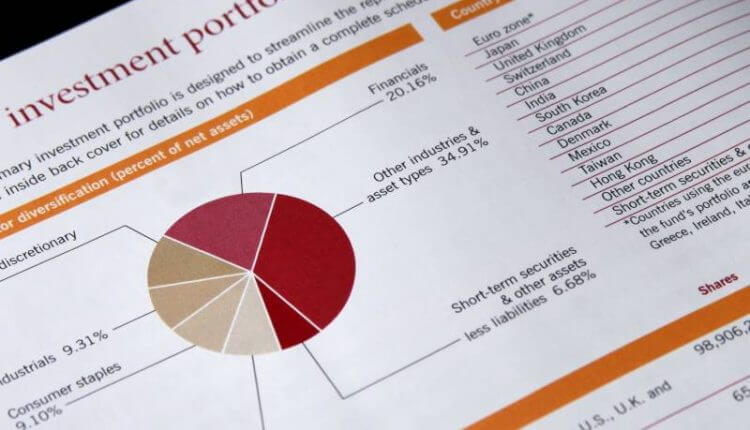
What is a Unit Trust Fund?
For long-term wealth building, Unit Trust (UT) Funds are often offered by financial institutes and wealth planner/ adviser. As a MAS regulated Collective Investment Scheme (CIS), Unit Trust offers the flexibility of withdrawal with the potential of financial returns based on market movement. Investing in Unit Trust Funds has gained popularity in the past few years due to aggressively promoting from banks and financial advisers.
By combining funds from a pool of investors, Unit Trust Funds allow diversification into a broad range of assets without any barrier of entry. This allows ease of participation in the potential growth and returns from a particular region or sector.
Related: Investment Portfolio
What happens when I invest into a Unit Trust Fund?
Due to the open-end structure of Unit Trust, investors can invest in (Subscription) or sell off (Redemption) on a continual basis. Subscription or redemption of the Unit Trust Fund is based on the current Net Asset Value (NAV). The NAV of each unit in the Unit Trust Fund is calculated on a daily basis.
Subscription – The purchase of units of the Unit Trust Fund based on the current Net Asset Value (NAV) of the Unit Trust Fund. Any applicable front-end loading or charges are based on the subscription amount.
Redemption – The sale of your units in the Unit Trust Fund based on the current Net Asset Value (NAV) of the Unit Trust Fund. Any applicable back-end loading or charges are based on the value of the redemption amount.
What is the Net Asset Value (NAV) of a Unit Trust Fund?
The Net Asset Value is basically how much each unit of a particular Unit Trust Fund is worth. This price valuation is conducted on a daily basis and NAV can go up, down or stay the same from the previous day.
- When the value of the pool of assets in the Unit Trust Fund increases after deducting all charges and fee incurred, the NAV goes up. Investor current investment is worth more than the initial investment sum.
- When the value of the pool of assets in the Unit Trust Fund decreases after deducting all charges and fee incurred, the NAV falls. Investor current investment is worth less than the initial investment sum.
NAV is calculated daily except for weekends and holidays.
What happens to the money invested in a Unit Trust Fund?
Each Unit Trust Fund has its own asset allocation and investment strategy. With the funds received from investors, the Fund Managers have to invest according to the fund mandate. Investors have no direct control over the Fund allocation and asset classes.
The purpose of the Investment can be for growth, income, a combination of both or even as a short-term liquidity holding (Money Market Funds). More details on the individual fund can be found in the Unit Trust Fund Prospectus, Product Highlight Sheet and Fund Factsheet.
Read about: Investing Guide: Reasons to investing in Unit Trust Funds
What are the charges to be expected from investing in a Unit Trust Fund?
Just like any business, the company managing the Unit Trust Funds incur costs and expenses. These are passed on to the investors of the Fund. These are some of the commonly charged fees:
Subscription Fee
Also known as a front-end load, this is a one-time charge usually ranging from 1% to 5% for investing in the Unit Trust Fund.
This amount is deducted from the initial investment amount, instead of an additional charge on top of the investment amount.
Redemption Fee
Also known as a back-end load, this is a one-time charge usually ranging from 1% to 5% of total amount of the total value when you sell off your units.
This amount is deducted from upon sale of the investment and depends on the final value of the redemption.
Note: Typically funds charging a subscription fee does not charge a redemption fee. The same is true the other way round.
Management Fee
An annual fee charged by the fund house for managing your investment. May range from 0.5% to 2%. The activity required of the particular fund usually translate to the difference in the amount of management fee charged.
Account Fee
The platform maintaining your account may charge a yearly fee depending on the invested amount.
Wrap Fee
An annual charge may or may not be offered to allow for switching between funds instead of being charged a subscription/ redemption fee for each transaction.
Drop us a message to learn more about minimising your fees and charges.
What are the risks of investing in Unit Trust Funds?
All investments carry certain elements of risk. Your principle and any potential returns are neither guaranteed nor protected. You may lose a substantial or all of your principal investment amount depending on the nature and objective of the Unit Trust Fund. Spread out your risk by diversifying your investments.
Read about: Investing Basics: Diversification
What can be used for investing in Unit Trust Funds?
There are options for Cash, CPFIS-OA, CPFIS-SA, CPF-SRS. Investment Linked Policy (ILP) which is tied to an insurance product, also offers a selection of Unit Trust Funds you can choose to invest your premium into.
Related: Investment Linked Policy
Read about: Investment Linked Policy: How does it work?
Is Unit Trust Funds suitable for everyone?
Depending on your risk profile, investing in Unit Trust Funds may or may not be suitable for you. Speak to a qualified adviser to discuss your investment objective, time horizon, expectation and amount of risk you are willing to take.
Read about: Investing Basics: Risk profile and investment portfolio
Drop us a message if you need more details or advice from an licensed financial adviser.
Go to: Blog
New to investing or like to know more about investing in Unit Trust Funds?
Considering changing your Unit Trust Funds investment or enhancing your investment returns?
Speak to an adviser or contact us for more details.



